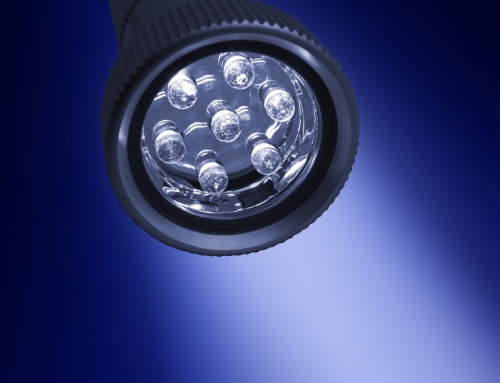You might think that the PhotonStar LED Group was one of many suppliers offering increasingly cheaper LED lights. They do make LED lights, but they have always aimed up-market with what they call intelligent lighting and are transitioning to become “…a retrofit connected lighting and building management business”.
The terminology can be confusing. One of PhotonStar’s basic products is the ChromaWhite light engine, or light bulb, which provides “biologically optimised circadian lighting”. That is, it changes colour and intensity to match natural light throughout the day on a 24 hour, circadian, cycle. It is believed that the standard lighting used in offices, schools and hospitals upset the cycle and cause problems with sleep, health and the ability to study or work.
ChromaWhite has been available since 2011. The next step was to provide a co-ordinated central control of such lights in a building. This is the purpose of PhotonStar’s HalcyonTM product, such as installed in the dementia ward of St Mary’s, Paddington. Night lighting is also controlled. It must be safe and must minimise the emissions in the non-visual spectrum that affect sleep.

Circadian profiles: to enable circadian lighting you need lots of cool white (blue rich) light during the day, and lower levels of warm light, without the blue, at night time (from http://www.halcyon-lighting.co.uk).
The central control is provided by wireless internet signals. It is but a short step to add different sensors within the building such as those measuring temperature, humidity, shading, gas and water flow or access to certain areas. You then have the basis of a building management system, or as PhotonStar put it a “scalable, secure wireless IoT (internet of things) platform”. The advantage here is not just people’s health but the savings in energy, operating costs and maintenance.
One strong motivator for this change has been the pressure on the traditional fixed white lighting business. Although demand for LEDs has increased strongly, so has competition and price pressure. PhotonStar LED Ltd, the division in the Group that sells LED light fixtures, saw revenues fall by 20 per cent from two million in H1 2015 to £1.59m H1 2016.
The light fixtures division focuses on new buildings while the PhotonStar Technology division sells HalcyonTM and light engines to the retrofit market. The division is smaller but growing, with revenues for H1 2016 up 6 per cent at £0.9m. In retrofits there is more need for customisation and training, with the result that PhotonStar is developing into a more service oriented group. A third division, Camtronics Vale, generated revenues of £0.7m in H1 2016 (H1 2015: 1.0m) from contract electronics manufacturing.
With revenues down, the Group has been cutting costs and downsizing over the last 3 years. However the pre-tax loss increased to £0.9m in H1 2016 from £0.6m in H1 2015. A share offering in February raised £1m and a further one in July offered 231000 shares at 2.625p. The share price has since decreased to 1.5p possibly in view of the H1 results. Market capitalisation is £3.29m.
The market in Europe for human centric lighting was estimated to reach €2300m per year in 2020, in a study by Lighting Europe in 2013. PhotonStar seem well placed to capture some of this. They continue to invest in product development and to increase their patent portfolio, and have won several awards for smart lighting. There are new developments on the way, for example to manage multiple buildings using cloud-based communication in conjunction with IBM, with several major paid-for trials on-going. All this will allow PhotonStar to tune into a much wider market than circadian rhythms and will hopefully turn the share price around.


